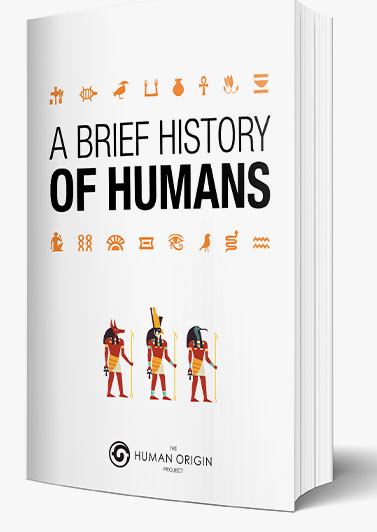Throughout human history, the sky has provided a tool to tell the time. By watching the stars, humans have calculated the position of the earth with distant stars. The precession of the equinox is one of those major astronomical markers of earth’s position in space. It’s also the basis of zodiac astrology.
Ancient societies around the world noted this phenomenon and in some cases recorded it. Evidence can be found etched into the earth with archaeoastronomy.
In Western society, the zodiac constellations, and the day of the equinox mark a giant clock that the earth rotates through vast periods of time.
What is the precession of the equinoxes?
The equinoxes are two days in the year where the sun rises exactly over the equator. When this happens, it creates the same length day all over the planet. Throughout history, it provided a way for ancient people to mark the change of the seasons from longer or shorter days.
The precession of the equinox can be measured in two ways.
How to measure the precession cycle:
1) Shifting Alignment of the Pole Stars
The Polestar or polar star refers to a star closely aligned to the north and south poles of the Earth.
What does the pole star indicate?
It is the star aligned with the Earth’s axis of rotation. Its apparent position is close to the celestial North pole.
Why are the pole stars important?
During the seasonal year, the positions of the north and south celestial poles appear to move in circles against the space-fixed backdrop of stars.
How do you find the pole star?
If you look directly overhead when viewed from the Earth’s North Pole.
What is the pole star?
Currently, the north celestial pole aligns directly to the star Polaris. It’s also known as the pole star.
This will change over time, and other stars will become the “north star.” This is the result of the precession of the earth and moves in a neat circle.
The south celestial pole currently lacks a bright star to mark its position, but over time precession will also cause bright stars to become southern pole star.
Precession of equinoxes in relation to the pole star
As the celestial poles shift, there is a corresponding gradual shift in the whole star field as viewed from a particular position on Earth.
Over a very long period (15 000 years ago) the earth used to point to Vega. The slow movement of these stars is the precession of the equinoxes.

Precession of the North Polestar has rotated from Vega to Polaris. Source
2) Measuring Precession: Star Backdrop During the Equinox Sunrise
The earth’s backdrop can be divided into a band of twelve constellations in the sky. It’s the earth’s great clock in the sky, also known as the zodiac constellations and the basis of zodiac astrology.
The better-known way to mark the precession of the equinoxes is to observe where the sun rises on the day of the spring equinox.
That’s the position of the Sun on the first the day of spring (the vernal equinox). You can measure that it slowly shifts westward around the zodiac constellations.
If an observer, anywhere on earth, looks due east one hour before dawn, they will watch the sun rise over the horizon into a constellation in the dawn sky.
In the current cycle, the sun rises into the constellation Pisces. That’s why you may hear that we are currently in the Age of Pisces.
Between two to four thousand years ago, an observer would have seen the sun on the spring equinox aligned with the constellation Aries.
Over large periods of time, the precession of the equinox describes the slow shift of the star backdrop in an anti-clockwise direction on the spring equinox.
These markers can be found all over the planet in ancient archaeological sites.
The next constellation is the Age of Aquarius and is said to start very soon, or may have already begun.
Effects of the precession of the equinoxes

Precession of the earth through the zodiac constellations over the long cycle.
The constellation that the sun rises into on the spring equinox changes over a very slow period of time. It’s due to a very gradual shift in the earth’s position relative to the stars.
The rate of precession of the earth equals 1 degree every 72 years.
Precession of the equinox is a twelve handed clock, much like the clock you see on the wall. The twelve numbers are the zodiac constellations, and the hand is the eyesight of an observer looking east on the day of the spring equinox.
It’s a clock that moves over a very long timespan. One period (or hour) or takes roughly 2160-years for the sun to move rises against the next constellation.
If this rate remains constant, it will take between 25,700 to 25,800 years to complete one full precession of the equinox.
However, the annual rate of precession is now thought to be speeding up, meaning the calculated length of one full cycle is getting shorter.
Earth’s precession and the zodiac constellations
In Western Culture, the constellations surround the earth in a band form the basis of zodiac astrology.
One constellation in the sky represents an area of the sky that extends about 8° north or south (measured celestial latitude). It marks the path of the Sun across the celestial sphere in a year.
From the earth, the sun passes one zodiac constellation per month, and cycles through all twelve once a year. The paths of the moon and visible planets are also within the belt of the zodiac.
Precession of the equinox marks when the sun rises into this band and into the constellation. For roughly 2610 the sun rises into one constellation before shifting into the next.
To precess through the 12 zodiac constellations (a full cycle through the sky), it roughly takes 25700 to 25800 years.
When is the Age of Aquarius in relation to precession of the equinoxes?
The zodiac constellations are regarded as the study of zodiac astrology, not astronomy. Exact calculations aren’t readily made, and there is room for interpretation.
The next zodiac age as marked by the precession of the equinox is the age of Aquarius. Currently, it rises into the constellation of Pisces. However, it’s been noted that we are now on the border of the Pisces and Aquarius.
Experts haven’t exactly agreed upon what age we are in. Some say that the age of Aquarius began in 2012. Others regard it as the dawn of the age of Aquarius. The exact beginning of the age of Aquarius as marked by the equinoctial rise of the sun may be something that’s difficult to measure.
What is the Age of Aquarius?
The constellations as defined by the International Astronomical Union (IAU) are different sizes. Astronomers generally divide the Zodiac constellations into twelve equal sections.
For example, the constellation Pisces – as defined by the IAU – spans more than 30o along the ecliptic or sun’s annual path in front of constellations of the Zodiac.
Zodiac astrologers, though, might disregard the span of the constellation Pisces on the sky’s dome.
Instead, they regard an astrological age as a precise 30o shift of the March equinox in front of the backdrop stars.
However, even if you equalize the size of the signs of the Zodiac in the sky, you need to consider when the Age of Pisces started to be able to know when the Age of Aquarius begins.
Currently, there’s no firm consensus among astronomers or astrologers as to when the Age of Pisces began, either. And thus, there is no consensus as to when the Age of Aquarius begins. The lack of agreement of which stars border the constellations makes this a contentious topic.
How to observe the precession of the equinoxes
Today, you can witness the equinox and judge which constellation the sun rises into for yourself.
Here’s how to observe precession:
- One hour before dawn on the day of the spring (vernal) equinox, you can stand at any point on the earth.
- Look due east, the sun will rise into the night sky and near a constellation of stars.
- Judge which constellation the sun is rising into.
Conclusion
The precession of the equinoxes is a measure of the earth’s larger astronomical clock.
It’s the basis of astronomy, zodiac astrology, and many other ancient traditions.
In the next article, we’ll explore why the precession of the equinoxes occurs.
Now it’s up to you. Do you understand the precession of the equinoxes?
Let us know about your thoughts in the comment section below.
Further Reading:




























